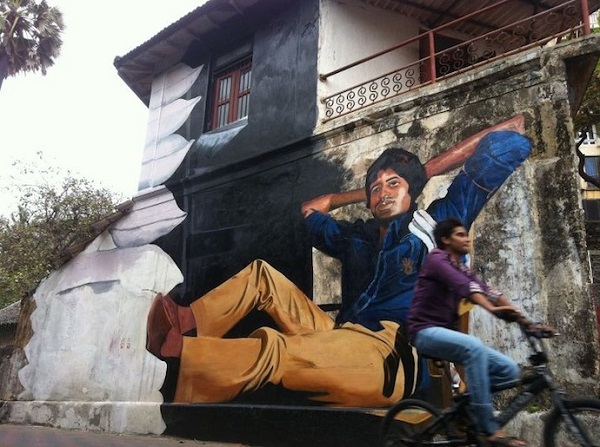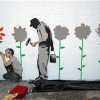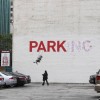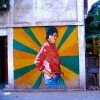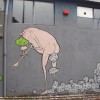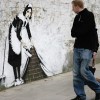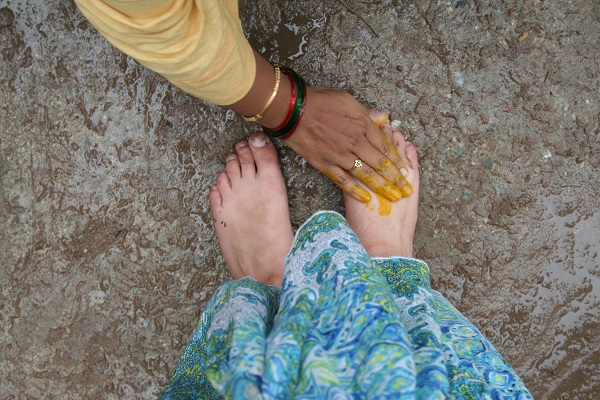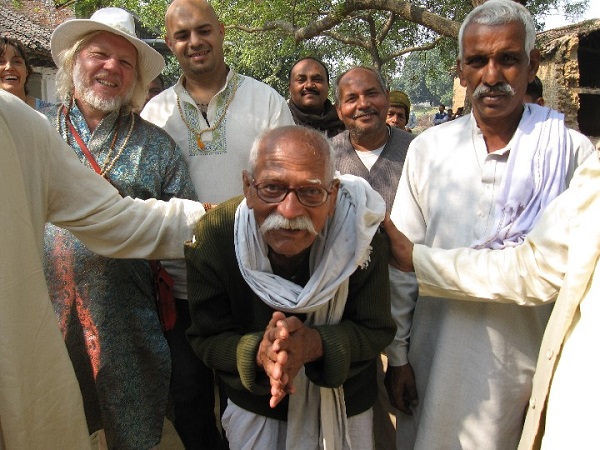Is graffiti mere vandalism of public property, or does it serve a more social, satirical purpose, the way art should?
 by Shweyta Mudgal
by Shweyta Mudgal
Mostly seen across such forgotten urban elements as derelict buildings, roadside walls, bus shelters and hoardings of cities across the world, graffiti or Street Art is a diverse, constantly evolving art form.
This art form has marked urban settings around the world and has developed its own flourishing sub-culture. Its element of ‘unsanctioned-ness’ brings to its creator a spirit of excitement and adventure; the kind of thrill that can only be experienced when one knowingly breaks a rule. Its intent to question the existing environment while putting a point across on a visual, public platform is it’s raison d’etre – an attribute rarely found among other forms of art.
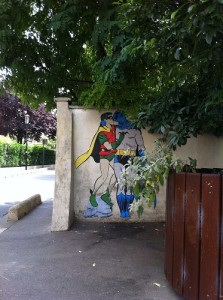 Considered a crime by some and an art form by others, Street Art veers between being considered vandalism, malicious mischief, trespass and intentional destruction of property, among others. Yet, it has been approvingly heralded by some as a form of bottom-up social activism and subversion.
Considered a crime by some and an art form by others, Street Art veers between being considered vandalism, malicious mischief, trespass and intentional destruction of property, among others. Yet, it has been approvingly heralded by some as a form of bottom-up social activism and subversion.
Thoughtful and attractive Street Art has also had regenerative effects on derelict neighbourhoods, transforming them into hip hubs drawing middle class yuppies. But this is a double-edged sword – artists who graffiti poor neighborhoods unknowingly transform them into trendy, ‘cool’ hoods. This makes real estate prices soar, thereby pushing out the original inhabitants of the area – the low-income families.
When I think of graffiti/Street Art in Mumbai, three interesting examples come to mind:
1. Gods on walls – Street Art, originally conceived by ‘rebels with a cause’, ironically operates in the exact opposite way in Mumbai. Here it is a catalyst used by home owners, 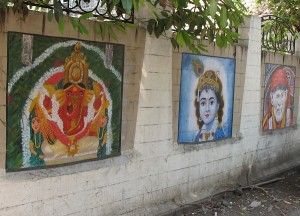 shopowners or the local municipality to ward off public urinators or spitters.
shopowners or the local municipality to ward off public urinators or spitters.
A few decades ago, divinity popped up on walls lining Mumbai’s pavements. This simple gesture was meant to spring mind games on unsuspecting men who would come to any roadside wall to relieve themselves or spit on. On finding the wall embellished with a picture of their favourite deity, they would pause, zip up their pants or withhold their ‘spit’, and folding their hands in prayer instead, vamoose off to find the nearest dumpster or public toilet.
An effective strategy at first, it soon lost its charm and has been unsuccessful in completely eradicating these acts off the streets of the city.
2. Graffiti to gratify – In Bandra, a recent modest graffiti revolution launched by Dhanya Pilo – called ‘The Wall Project’, started 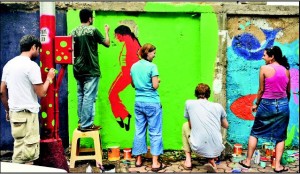 between 2007 and 2008 on Chapel Road – distinctly differs from the original definition of graffiti/Street Art by not necessarily provoking authority. Here, it has been perceived as a gesture of embellishment and good will, while effectively bringing neighbours together. The Wall Project took on its most popular and inclusive endeavour yet, when it was given complete creative control by the BMC to use a 2.4 km long wall along the Tulsi Pipe Road as its canvas. With over 400 enthusiastic artists and citizens participating, the entire wall was converted into a large mural – an unheard-of artistic collaboration with municipal authorities.
between 2007 and 2008 on Chapel Road – distinctly differs from the original definition of graffiti/Street Art by not necessarily provoking authority. Here, it has been perceived as a gesture of embellishment and good will, while effectively bringing neighbours together. The Wall Project took on its most popular and inclusive endeavour yet, when it was given complete creative control by the BMC to use a 2.4 km long wall along the Tulsi Pipe Road as its canvas. With over 400 enthusiastic artists and citizens participating, the entire wall was converted into a large mural – an unheard-of artistic collaboration with municipal authorities.
3. The Amul Ad Campaign – Amul advertises its butter via witty, satirical commentary on issues of the day. Instead of on street walls, it is found on billboards through an alternative form of art, i.e cartooning, to make its point.
The Amul Ad campaign has, for the past almost-50 years of its existence, looked for creative fodder in controversies big and small – mining scams, labour strikes, sporting feuds, corruption protests, collapsing infrastructure, et al. Unlike real ‘street art’ it may not aggressively rally for issues. But with a supportive client backing it, this campaign has revolutionised the face of advertising in the country with their constant tongue-in-cheek look at the current socio-political climate.
An act of vandalism to some, a means of rebellious expression to some others – to me, Street Art is the most democratic form of popular public expression. It is art with an agenda, best understood by seeing in-situ. It is publicly owned, and remains unavailable for collection or possession by art connoisseurs, who may want to turn it into a trophy. It works as much on an ‘Art for all’ level as it does for an ‘All for art’ one!
My personal all-time favourite street artist, the British-born Banksy is, apart from being an anonymous graffiti artist, a political activist, painter, social prankster, filmmaker and an all-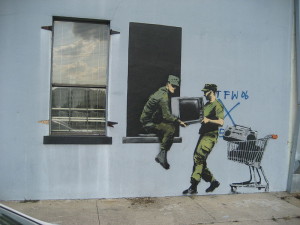 purpose provocateur, to name a few. His metaphoric epigrams, whether stencilled on the streets, sold in exhibitions or hung in museums on the sly, have been indicative of his humorous wit and fearless satire.
purpose provocateur, to name a few. His metaphoric epigrams, whether stencilled on the streets, sold in exhibitions or hung in museums on the sly, have been indicative of his humorous wit and fearless satire.
His idea of what art is resonates with how I think it should be – vehement, intelligent, accessible and communicative to anyone who looks at it.
Because as he puts it in his own words, “Graffiti is one of the few tools you have if you have almost nothing. And even if you don’t come up with a picture to cure world poverty, you can make someone smile while they’re having a piss.”
A Mumbaikar by birth and a New Yorker by choice, recently-turned global nomad Shweyta Mudgal is currently based out of Singapore. An airport designer by day, she moonlights as a writer. ‘Outside In’ is a weekly series of expat diaries, reflecting her perspective of life and travel, from the outside-in. She blogs at www.shweyta.blogspot.com and confesses to having had a massive secret crush on Banksy ever since she learnt of him. She thinks he is the Superhero of our times!
- Grey Ghost by Banksy
- Street Art in Miami, by Banksy
- Deewar mural at Bandra, by artist Ranjit Dahiya
- Nemos in Milan
- A Banksy work showing a chimney sweep
(Pictures courtesy Shweyta Mudgal, Bollywood Art Project, banksy.co.uk)

